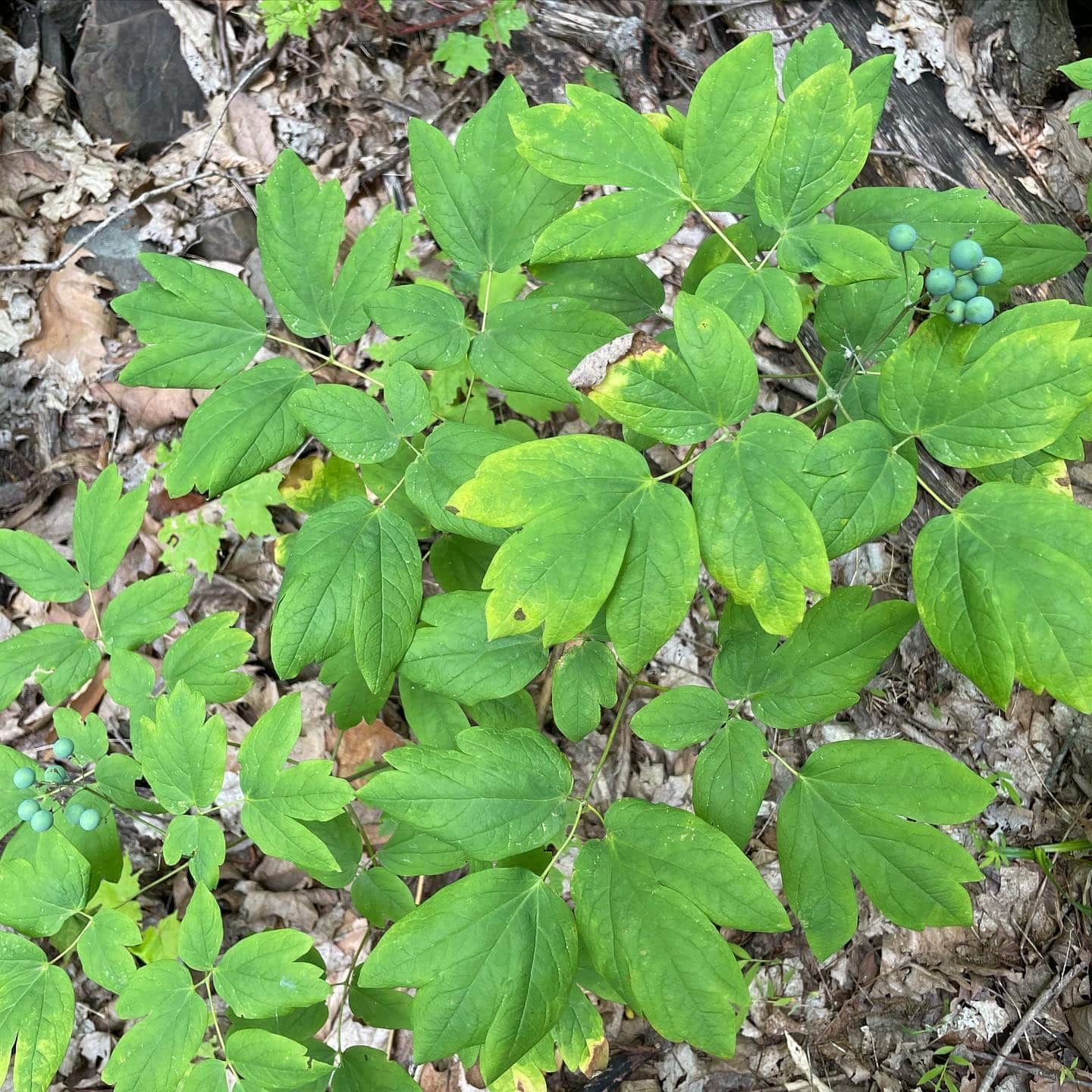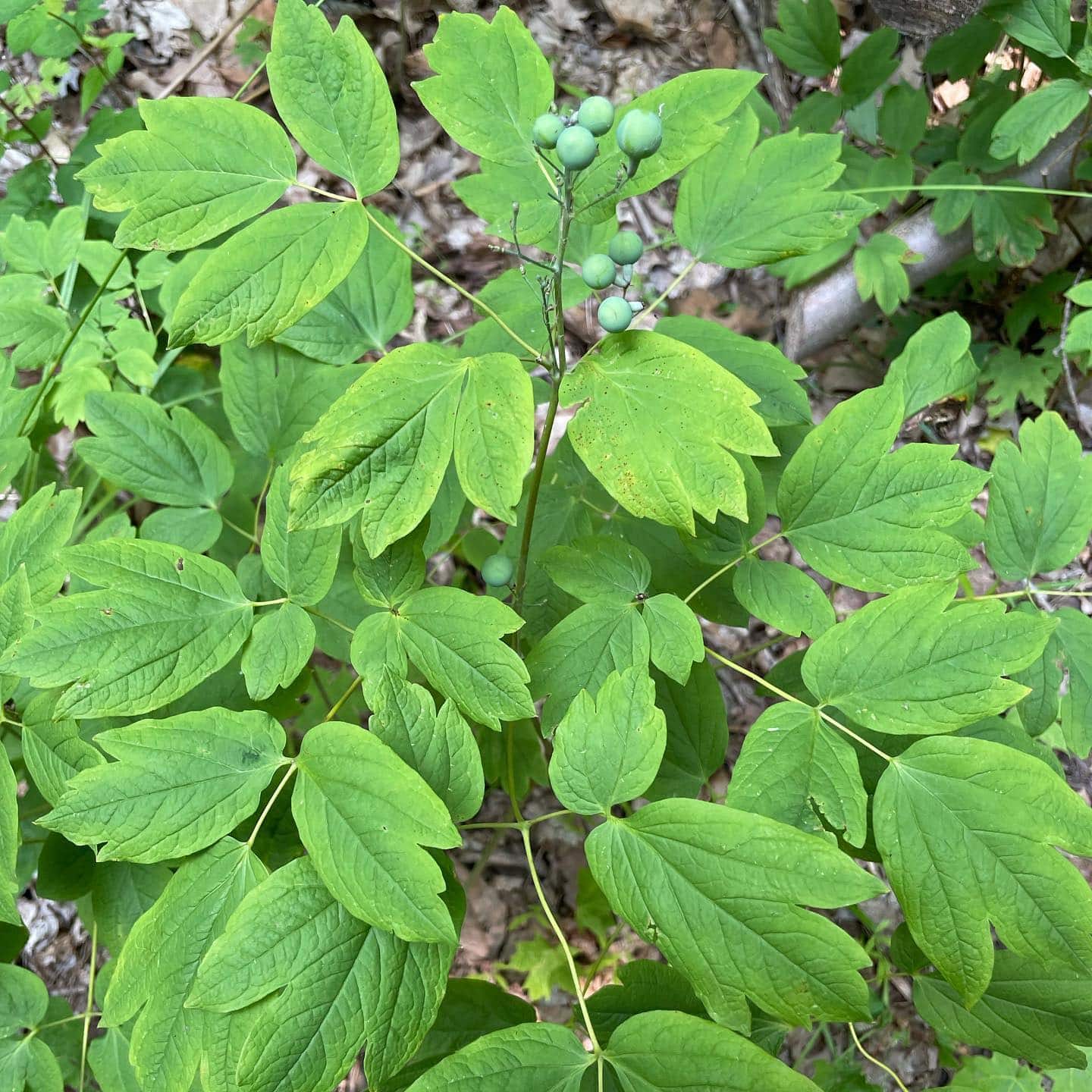Page Created by Connecticut Foraging Club
Upcoming Events | Meet the Instructors | Plant Archive | Mushroom Archive
----------------
Upcoming Events | Meet the Instructors | Plant Archive | Mushroom Archive
----------------
Blue Cohosh (Caulophyllum thalictroides) is a native plant that was traditionally used to induce labor.

Blue cohosh grows best in mixed hardwoods. It can be identified by its blueish green lobed leaves.

Blue cohosh is a non-aggressive plant that is at risk for over-harvesting.
Thoroughly roasted seeds of the blue cohosh berry have been used as a caffeine-free coffee substitute. Raw seeds are toxic.

The root was traditionally used in pregnant women to induce labor and in non-pregnant women to cause a menstrual period. Use of blue cohosh is no longer recommended as it constricts blood vessels in the heart. Blue cohosh can cause many side effects including stomach cramps, chest pain, increased blood pressure, and increased blood sugar.
Handling berries, roots, and leaves may also cause skin irritation. Due to the risk of over-harvesting and myriad of side effects, blue cohosh is best admired rather than foraged.
--
Written by Amy Demers, founder of the Connecticut Foraging Club. To learn more about foraging in Connecticut, check out our upcoming classes.






